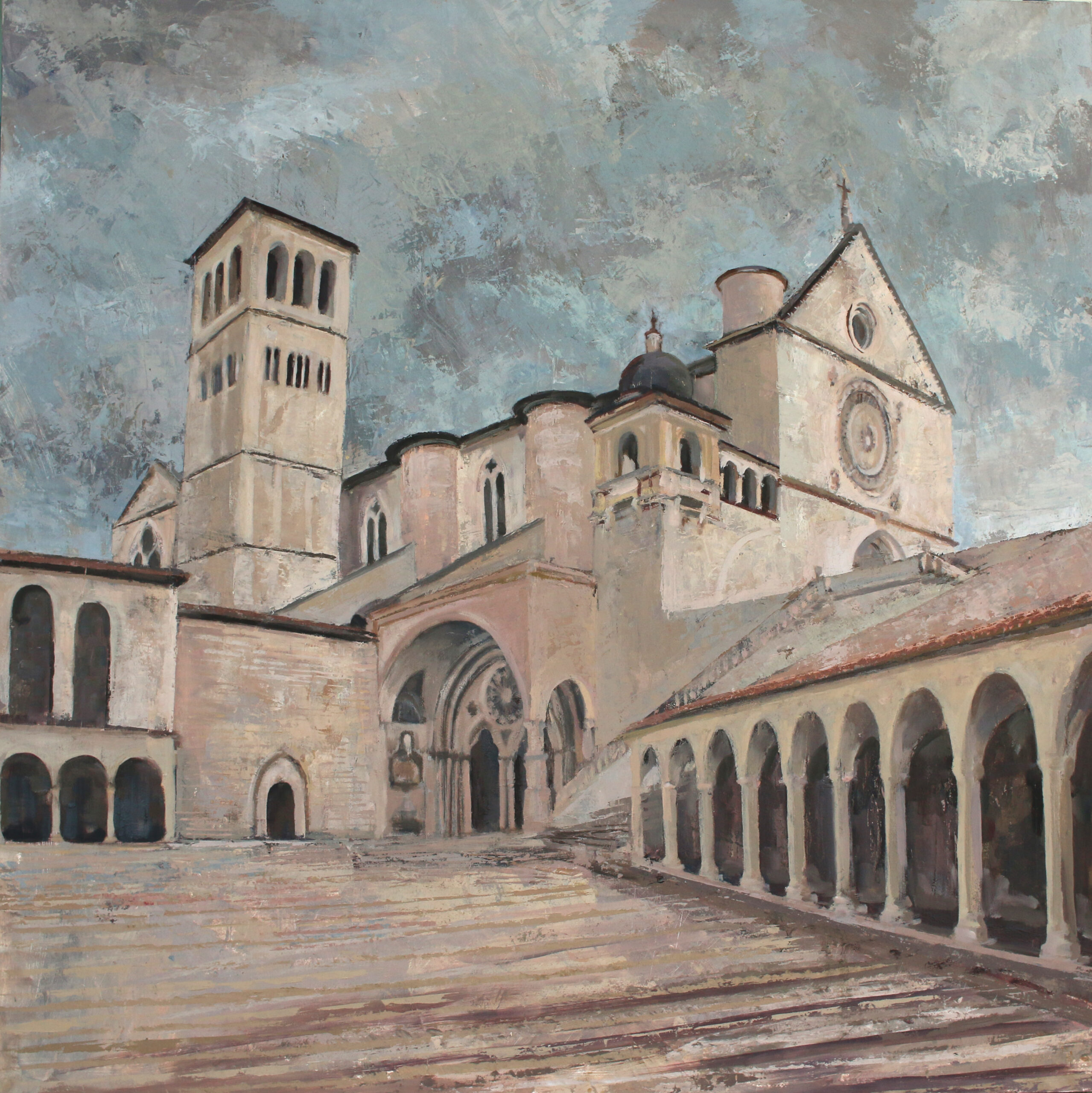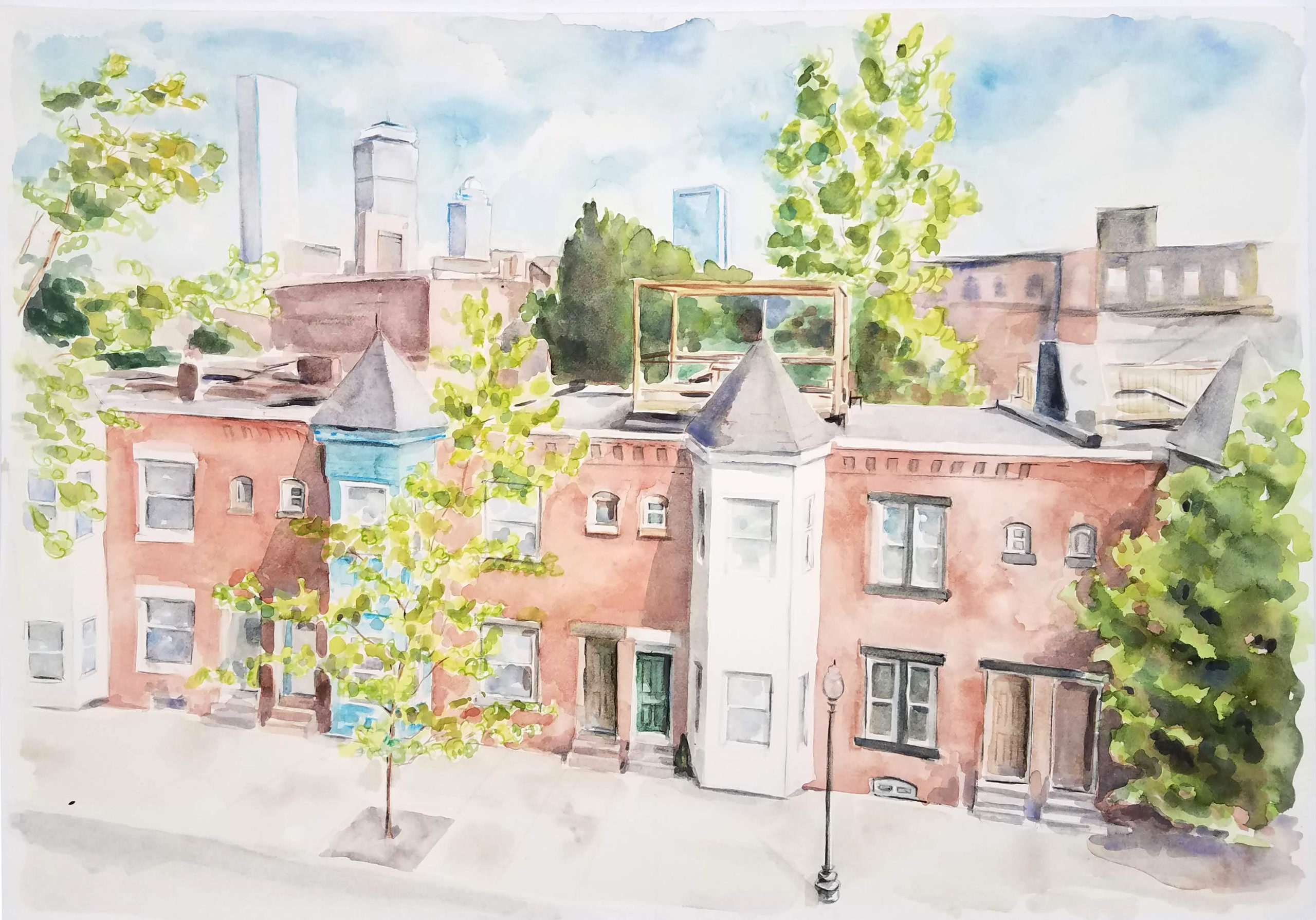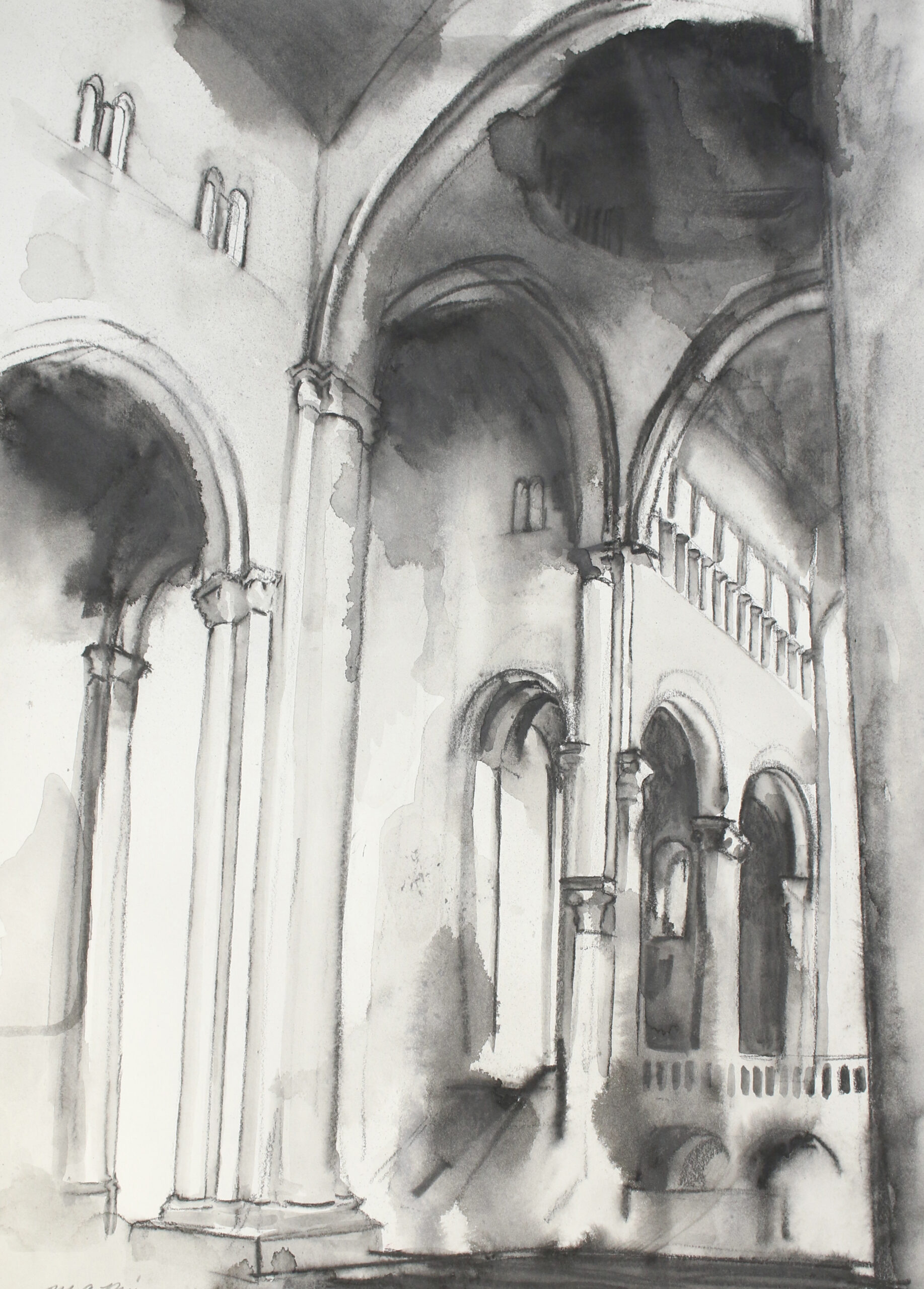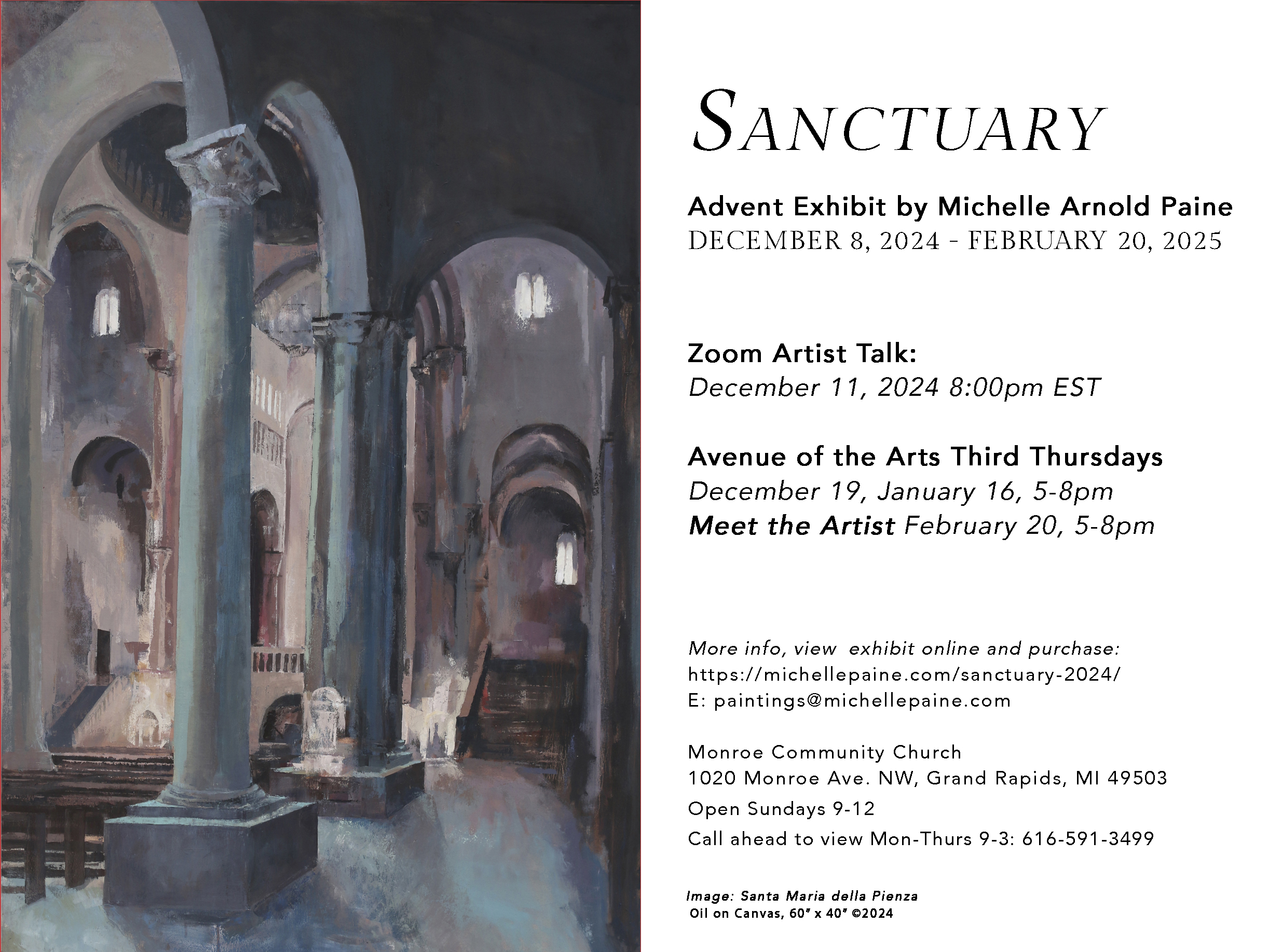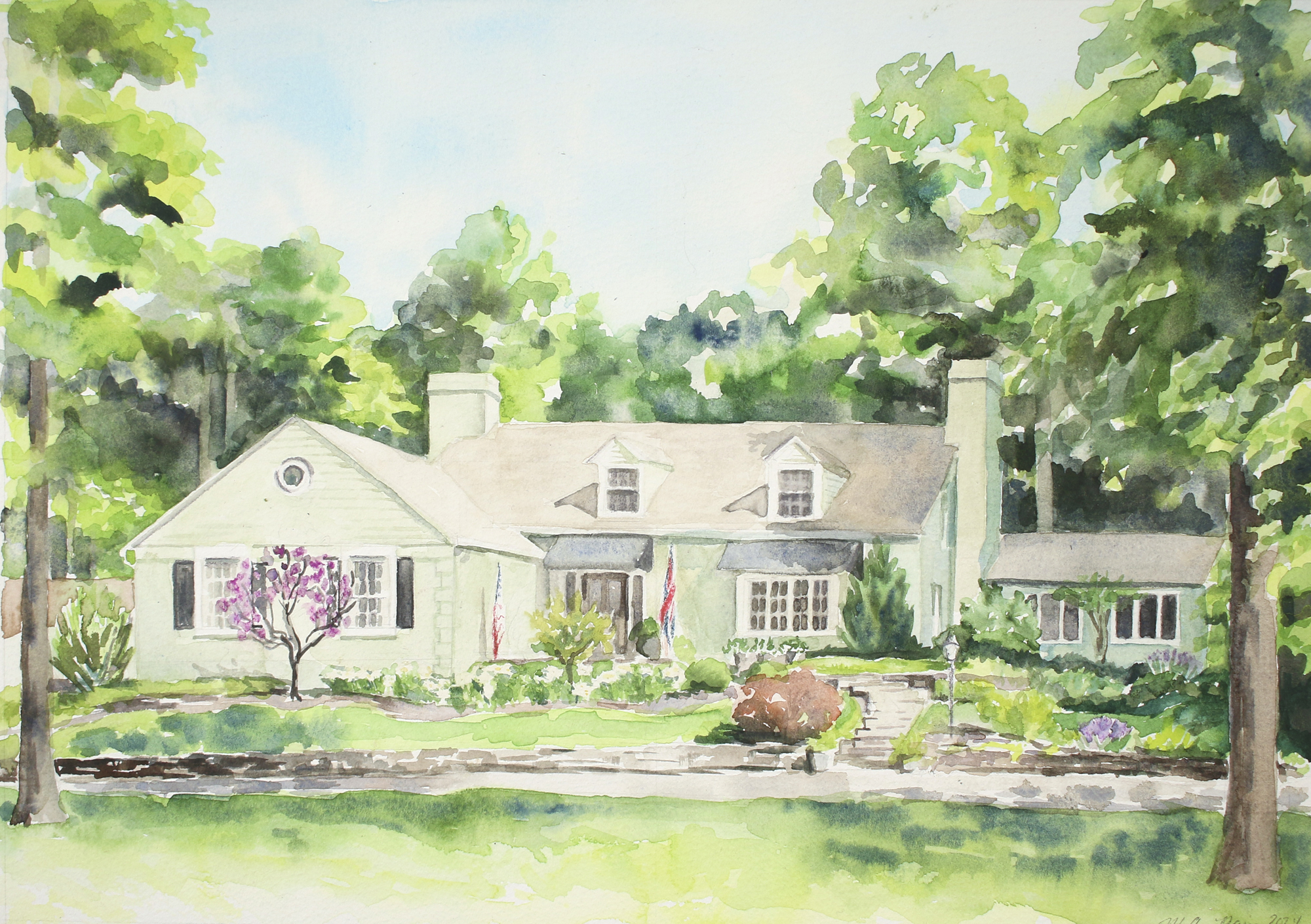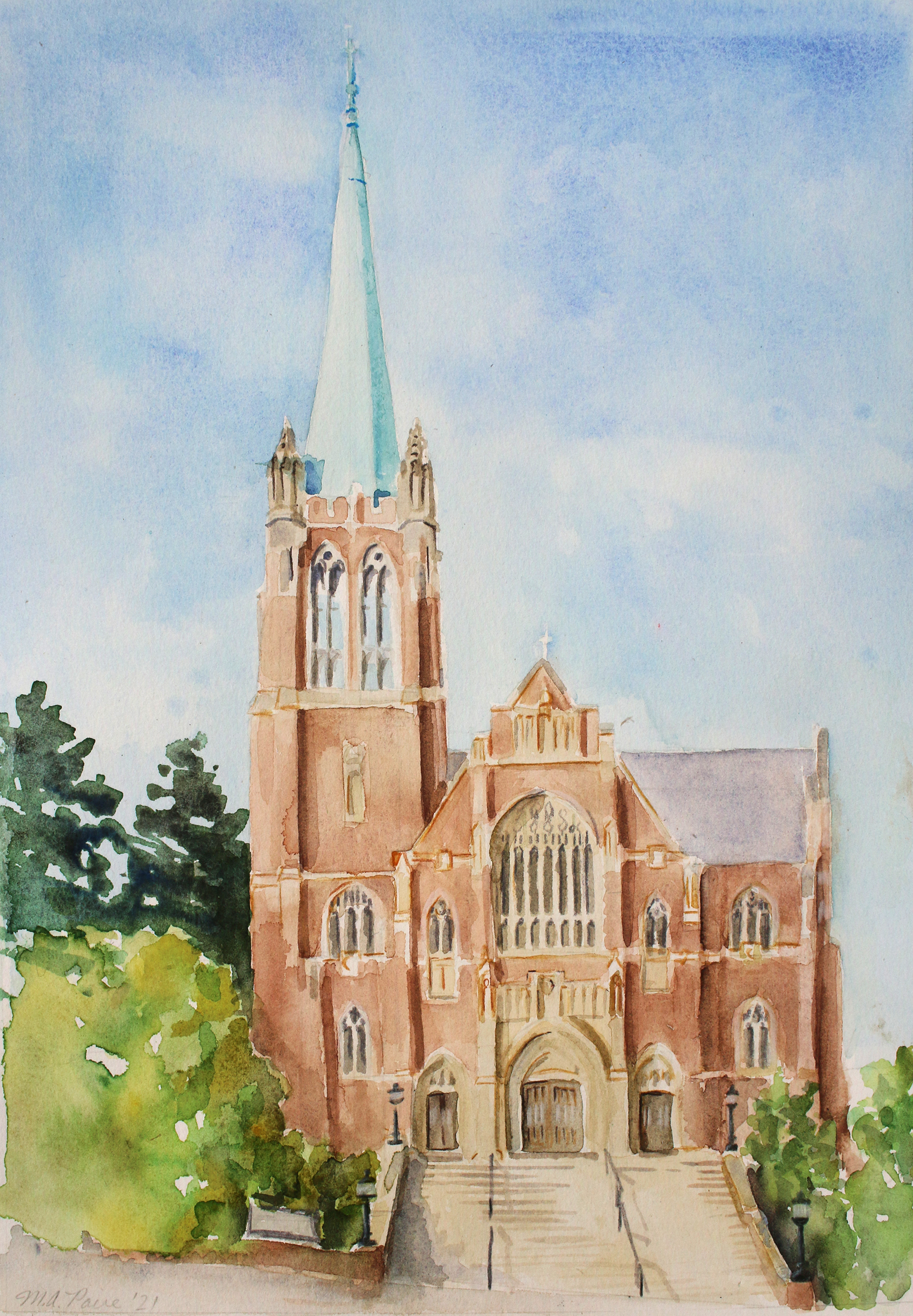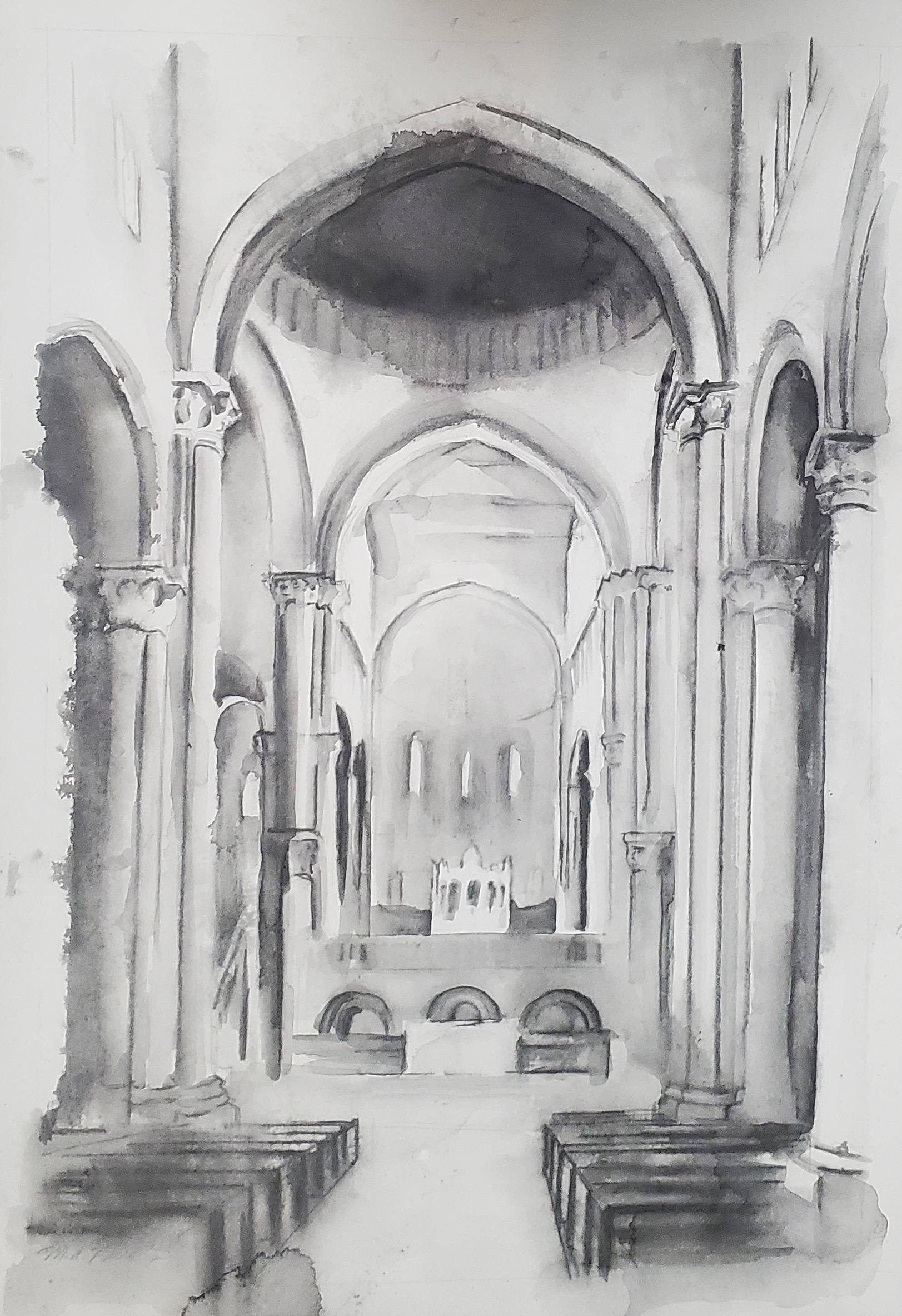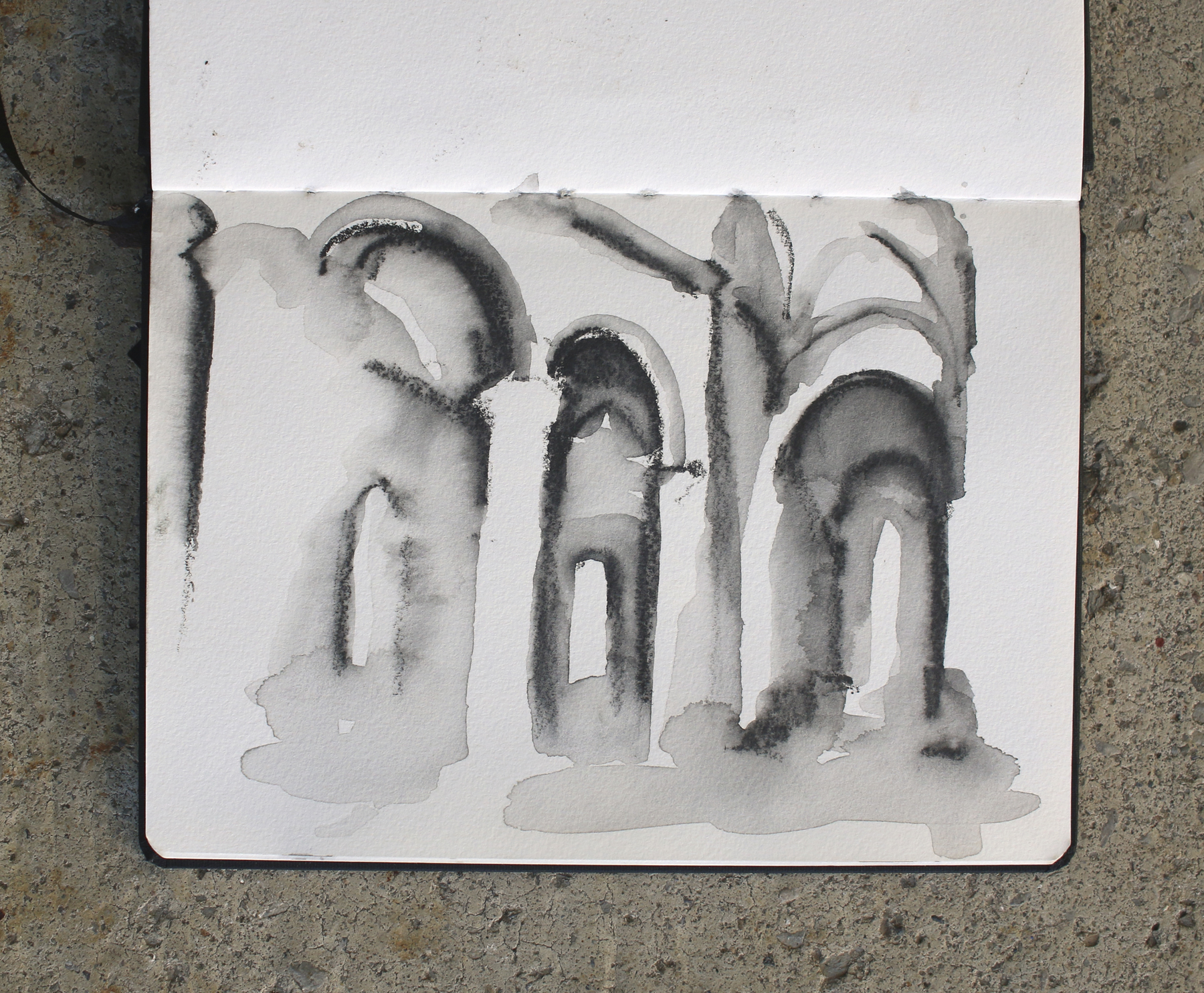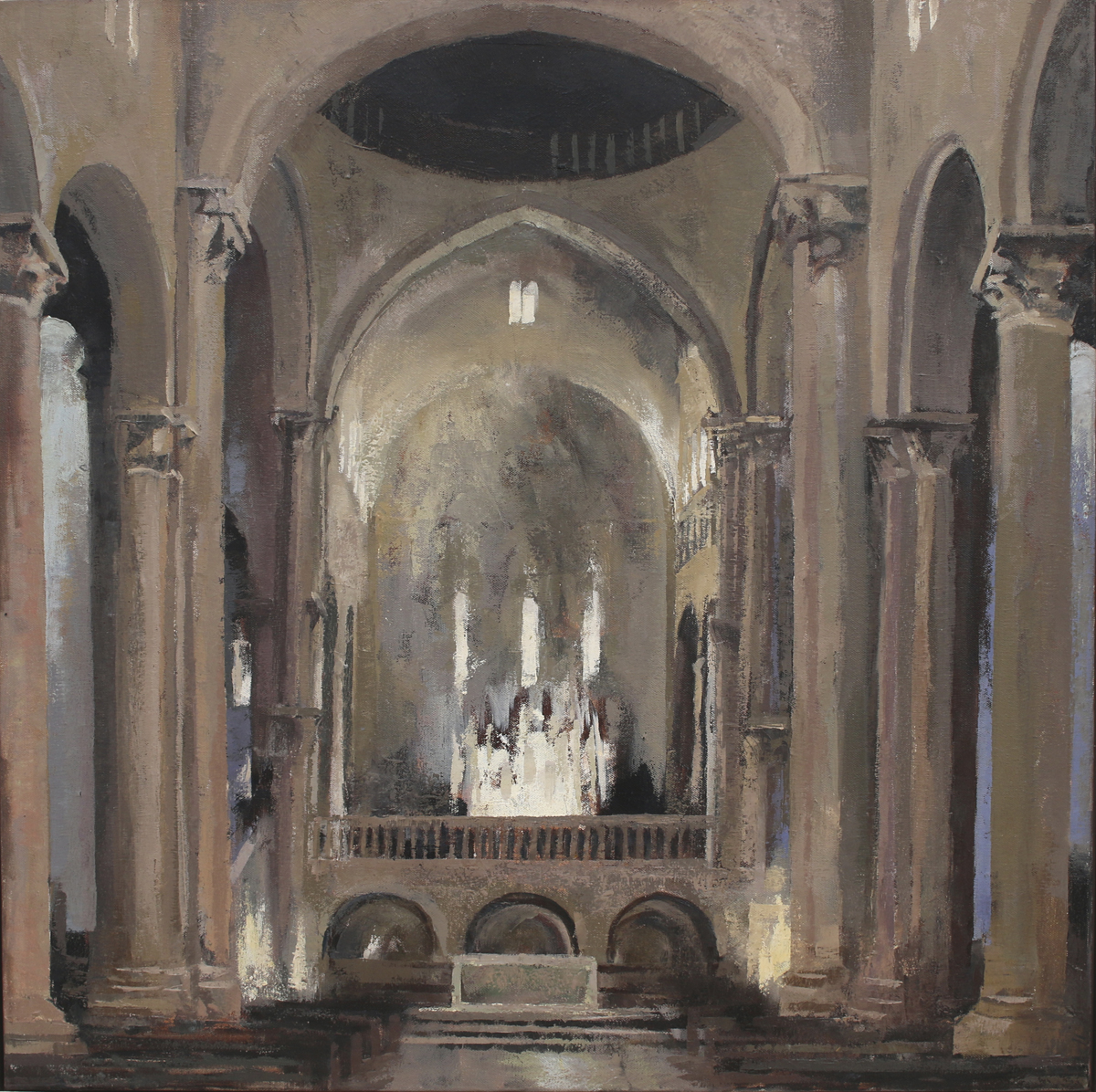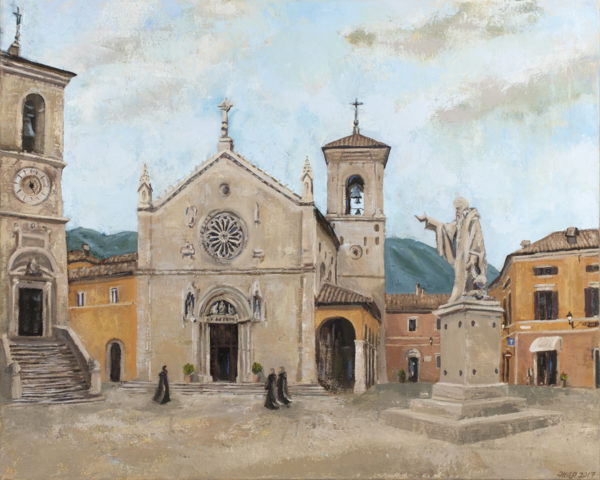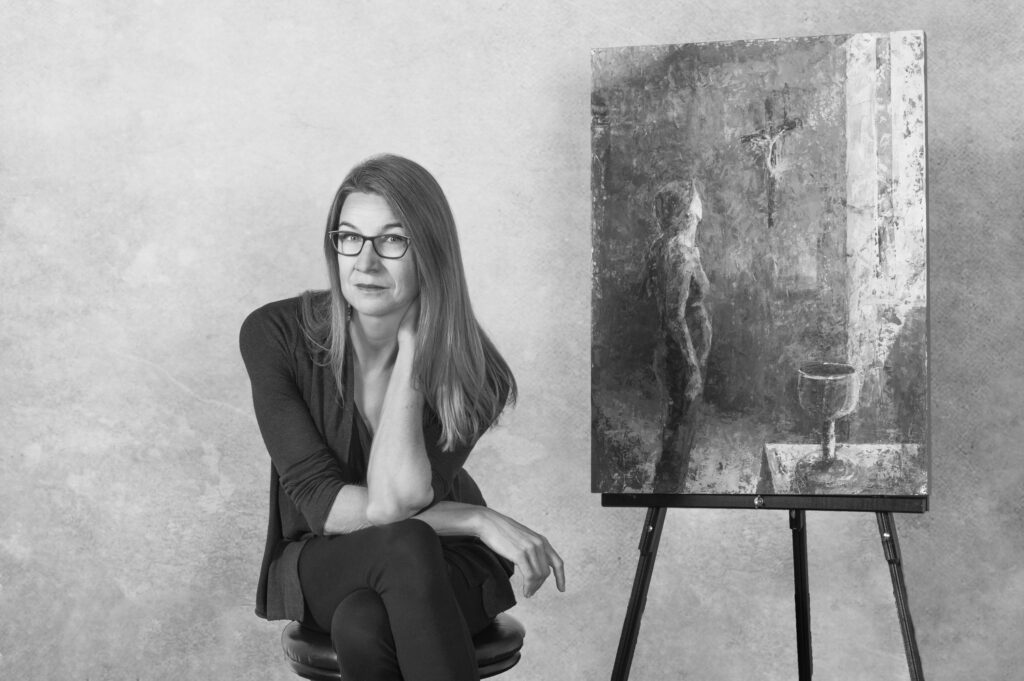
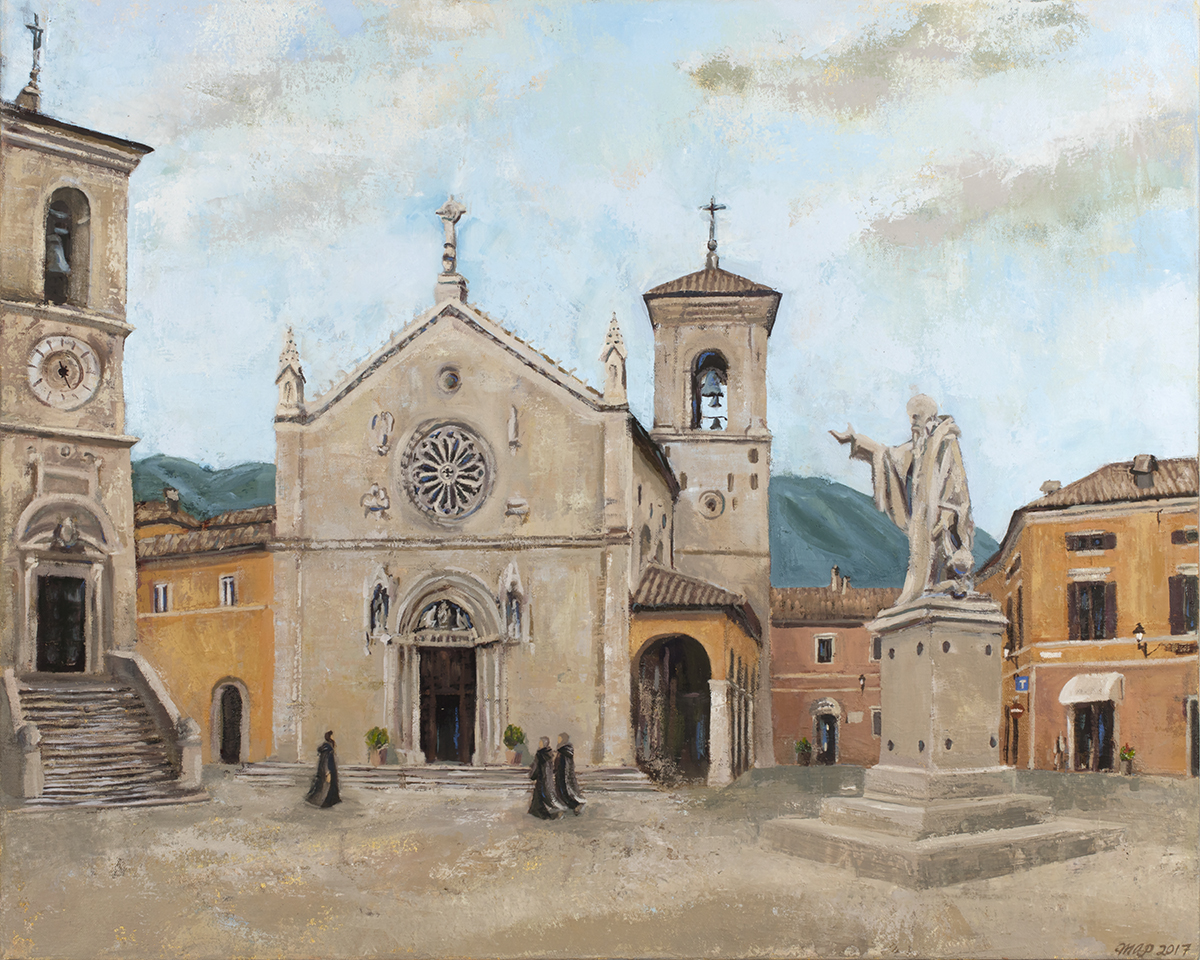
Monks of Norcia Rebuilding Tradition
The Monks of Norcia know about rebuilding tradition. In the year 2000, the Vatican approved a new Benedictine community to joyfully reclaim a monastery in Norcia, Italy. The ancient monastery had been devoid of monks since the early 1800s. The Monks of Norcia lovingly began to restore the Basilica of Saint Benedict, built over the fifth-century birthplace of the famous saint. Catholic Faith Journeys and other groups of pilgrims have brought many groups of pilgrims to Norcia to visit the monks and pray at the birthplace of Saint Benedict.
These new paintings have become my own reflection on the work of rebuilding tradition. One commemorates the Basilica as it looked before the earthquake. The second depicts it in its currently ruined state. One painting was commissioned by a Catholic, the other by a Protestant, and so together they are a witness to the influence of the great Saint Benedict on Christian life.
In a cultural sense, the Benedictines have always know what it means to rebuild. Share on XRebuilding Culture: Then and Now
Widely credited as the founder of Western monasticism, Saint Benedict combined spirituality and practicality in his guide for monastic life, “The Rule of Saint Benedict”. The success of his communal experiment preserved classical learning and Christian faith through the chaos and upheaval of medieval Europe. In a cultural sense, the Benedictines have always know what it means to rebuild.
Pope Paul VI dedicated the continent of Europe to Saint Benedict as its patron in 1964. In the midst of growing secularization in Europe, he entrusted Saint Benedict to rebuild and guide the continent of Europe through this crisis, as well.
Rebuilding Hearts through Work and Prayer
The motto of the Benedictines is “ora et labora” – work and pray. Saint Benedict understood the deep integration between body and spirit. Prayer and work nurture each other, as our bodies and spirits must be nurtured in tandem. Sin seeks to pull us apart, to dis-integrate us. Saint Benedict understood that work and prayer rebuild our hearts from the wounds of sin.
Much of our contemporary Christian understanding of ministry, education, and worship traces its origin to this monastic integration of work and prayer. In this way the Benedictines have inspired countless other religious orders throughout the centuries to innovate within the culture. Thanks to Western monasticism we have hospitals, universities, and other institutions which we consider to be hallmarks of “civilization”.
Rebuilding Christian Community
In the last few decades there has been a new ecumenical appreciation of monasticism. What does it mean to rebuild Christian community in the 21st century? How do we respect and follow tradition while also moving forward in history, embracing the innovation of our natural human creativity?
How do we respect and follow tradition while also moving forward in history? Share on XThe renewed interest in monasticism has sparked the imagination of higher education programs, particularly in America. The Monks of Norcia are mostly Americans. This trans-Atlantic dialogue is a large part of my own story. My journey to the Catholic Church and my artist vocation initiated in the Gordon College in Orvieto program, housed in a convent, looking to that monastic heritage for the program’s vision. The Gordon College in Orvieto program encourages creative students in the arts and humanities to rebuild an appreciation of beauty and the arts within the church.
Just a couple of years ago The Community of St. John began the Saint John’s Institute in Denver, Colorado. In this innovative degree program. the students live in community with each other and the monastic Community of John while they take online courses towards an MBA. This unique model of formation has the final aim of creating financially sustainable ministry opportunities for the New Evangelization. Work and prayer; “Ora et labora”. Saint Benedict continues to speak to those who wish to rebuild contemporary American education, too.
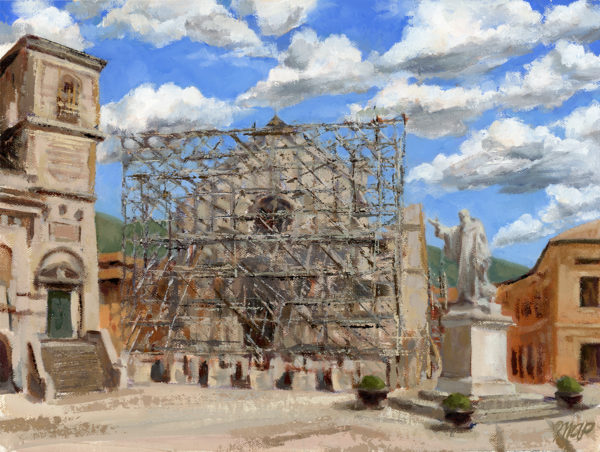
Nursia: Pulpitum, Oil on Canvas 9″ x 12.25″ ©Michelle Arnold Paine. Private Collection. Click Image to Purchase Prints.
Rebuilding Monastic Tradition
Benedict’s first monastery Montecassino, founded around 529 AD, was far (in those days) from his birthplace of Norcia in Umbria. Eventually the Benedictine monks found their way across the world and back there. Since the 10th century monks have been the caretakers of the Basilica. This medieval church in Norcia was built over the childhood home of the great saint and his sister Saint Scholastica.
In 1810 Napoleon closed many monasteries across Europe, and the monastic community in Norcia fled. From that time there until the year 2000 there had been no monastic presence. In the Jubilee Year 2000 Father Cassian Folsom and a group of American monks re-established a monastery there, thus renewing the Benedictine rhythm of work and prayer in the birthplace of the patron saint of Europe. After a long absence, Western monastic tradition returned to its birthplace.
Benedict’s Rule encourages monastic communities to sustain themselves financially. Historically many European monasteries produced beer, a safe means of hydration in medieval, plague-ridden Europe. The Monks of Norcia are rebuilding this tradition, too: in 2012 Birra Nursia was launched, selling out the first batch in only a few days.
Monks of Norcia Rebuilding Tradition in Norcia: How You Can Help
August 24, 2016, a massive earthquake hit the town of Amatrice and the mountainous region north of Rome. Although Norcia did not suffer the widespread destruction of Amatrice, significant structural damages occurred to the monastery. After the earthquake the monks lived in tents and then pre-fabricated housing as they, like many others, wait to renovate spaces which are too damaged to safely inhabit. In October 2016, an even larger earthquake hit closer to Norcia and all the churches, including the Basilica of Saint Benedict, crumbled. You can read more about their specific needs and plans at this link.
I donate a portion of net proceeds of prints of the Basilica of Saint Benedict to to the Monks of Norcia Foundation. Another enjoyable way to support the monks is to purchase one of their award-winning CDs or order Birra Nursia from the monastery brewery.
